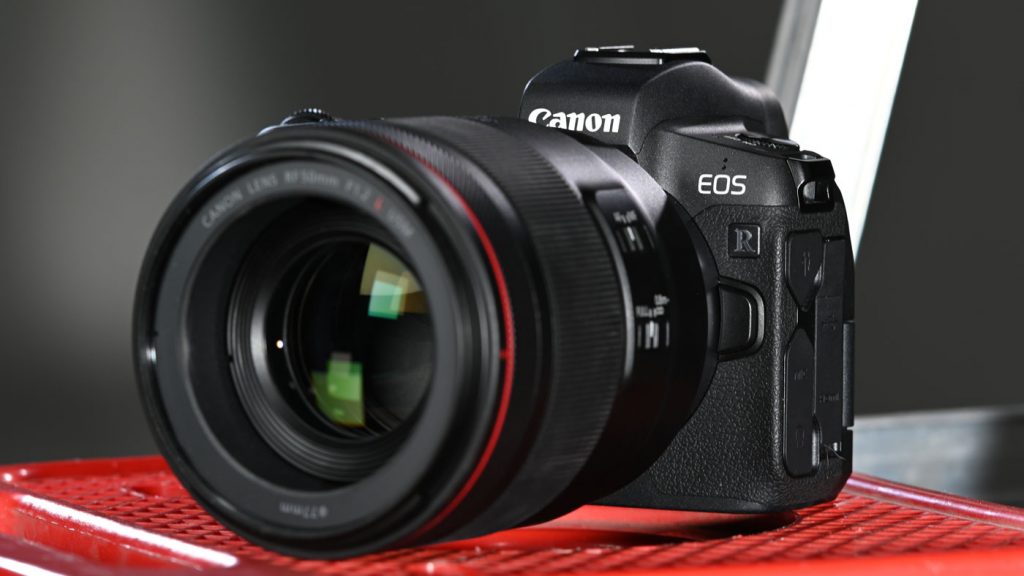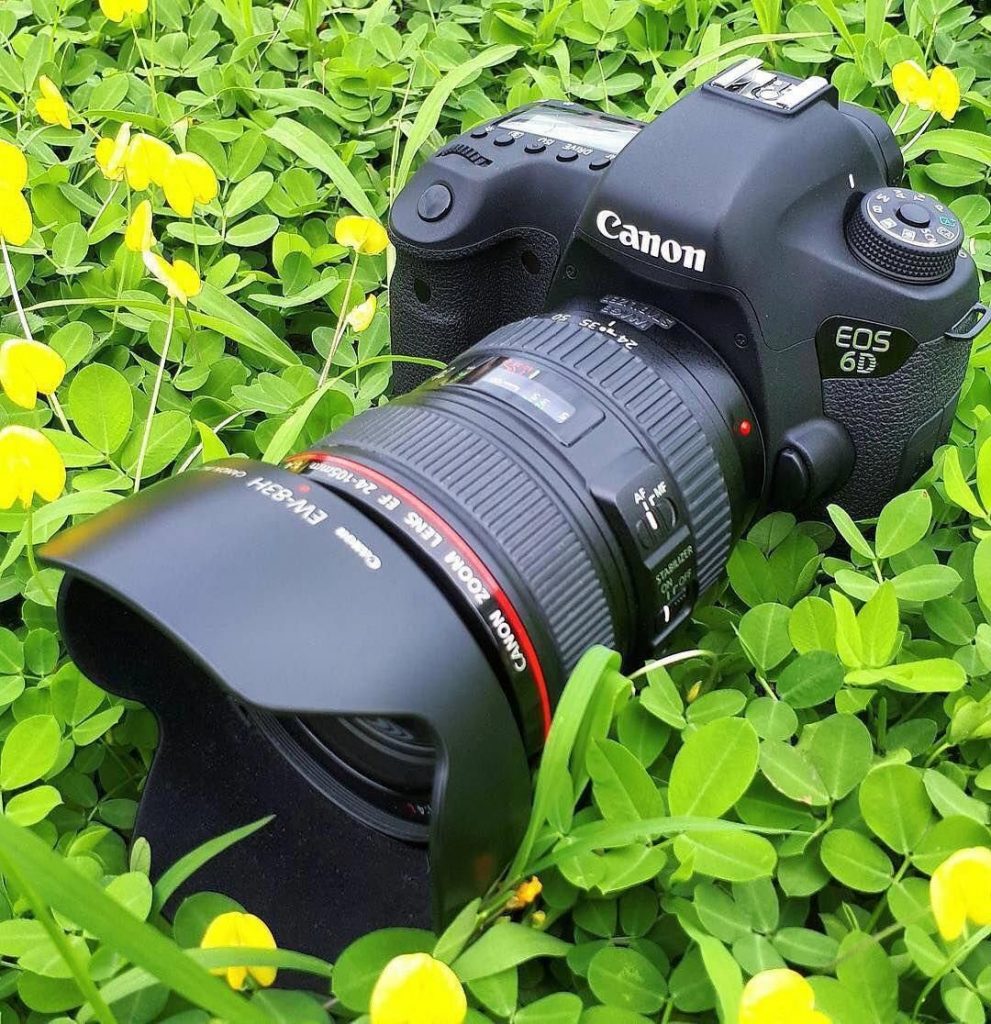The mirrorless tsunami is well under way. We have a wealth of full-frame options with new mounts, smaller flange distances, vastly improved EVFs, and smaller bodies. Given the dent that this is already putting in DSLR sales, what’s the next step? Sony already has a well-established range of crop-sensor mirrorless bodies, but will Canon and Nikon follow suit?
DSLRs have peaked. The technology has hit a wall in terms of its limitations and the scope for innovation is now incredibly narrow. As detailed in this thought-provoking article from TechCrunch, the biggest area for developments in camera technology is actually software, not hardware, and allowing a camera’s processor to see the scene exactly as it would be captured before the shutter is triggered is a major advantage that mirrorless cameras have over DSLRs. In-view exposure information is one significant advantage, and intelligent autofocus is even bigger. Other software-driven advantages may soon start to emerge, such as Fujifilm’s ability to capture a shot before you even pull the shutter.
The DSLR Hangover and What Comes Next

Given the evolution of full frame, bringing all of the advantages of mirrorless to APS-C would see the creation of some amazing cameras; consider the excitement if the long-overdue successor to the Canon EOS 7D Mark II were mirrorless. A sports and wildlife shooter with incredible autofocus, in-body stabilization, and professional video capabilities would be a monumental camera for Canon to bring to market.
Canon’s biggest disadvantage right now is the success of its DSLR range, and significantly, its depth. Having so many different bodies offering so many different features has been a huge market advantage, covering the first-time buyers through to the seasoned pros. With DSLRs, offering a range of features was easy because so much of it is governed by physical aspects such as the number of autofocus sensors and the frame rate. In a DSLR, the autofocus sensors sit separately from the sensor, gathering information from a secondary mirror, so stripping a couple of those away is relatively straightforward; fewer autofocus sensors, cheaper camera. Another example: frame rate is governed by the tiny servo that flips the mirror out of the way to allow an exposure, and putting a slower motor in is also a simple task. By contrast, with mirrorless cameras, autofocus is all about the sensor so there’s no separate batch of autofocus sensors doing the work, so not much opportunity for trimming. Plus, there’s no longer that giant mirror that needs to be flapped out of the way, allowing higher frame rates with less effort. When you also consider that the sensor curtains can be eliminated completely, suddenly we’re seeing frame rates of 30 frames per second and beyond.
Canon’s Capacity to Cripple

For Canon, varying the frame rate, sensor size, and autofocus features made sense because they were all governed by different factors. With mirrorless, making those variations is not so simple, especially when you consider how the number of megapixels has plateaued in the last few years. The recently announced EOS RP offers an insight into why all of this might be a problem.
For its budget full-frame mirrorless camera, Canon opted to use the sensor from the 6D Mark II and coupled it with the DIGIC 8, the processor from the 5D Mark IV and also used in the EOS R, Canon’s first and currently flagship mirrorless camera. As a result, there’s very little that this combination inside the EOS RP can’t achieve in comparison to the EOS R, so instead of being able to build in limitations because of individual components, Canon is instead obliged to deliberately cripple certain features so that the RP doesn’t undermine the other cameras that it has for sale (or is planning for the future). For example, on the RP, Canon opted to remove 24 fps when shooting video at 1080p, remove 30 fps and Dual Pixel autofocus when shooting in 4K, and withhold C-Log. In theory, you could hack the firmware of the EOS RP and get a camera that’s just like the EOS R albeit with slightly fewer megapixels. One caveat would be that the battery life would be terrible and the body would probably overheat when shooting 4K 30 fps, and notably these are tradeoffs that Sony was less concerned about when rolling out the early iterations of its own full-frame and APS-C mirrorless offerings.
The EOS RP is a nice, affordable stills camera but fundamentally compromised in terms of its video features, though not because the technology is a limiting factor at that price, but because the manufacturer has deliberately disabled certain elements.
In summary, the switch to mirrorless brings some significant advantages to customers (such as autofocus that is faster, more intelligent, and with greater coverage), and countless headaches for manufacturers. Sony has pushed Canon and Nikon into designing products that they may have had no intention of creating, and it remains to be seen whether this continues with their APS-C cameras.
The Other Big Problem: Lenses and Mounts
One of Sony’s huge advantages was the early adoption of its mount, creating a system that crosses over with great agility between sensor sizes, however accidental that may have been. With Nikon and Canon’s notably wider mirrorless mounts, it might well be the case that Sony’s mount will feel quite limited in 10 years’ time when its competitors have squeezed all of the potential out of their new lens lineups. Until then, Nikon and Canon have to find a way of navigating three different types of lens and potentially a fourth if they choose to push forward with APS-C mirrorless. Consider this picture of the Sony a6400. In its appearance, it looks like little more than a lens mount with a battery and an LCD attached, and that lens mount is puny compared to the EOS R and the Nikon Z 6 and Z 7. To me it seems impossible that Canon or Nikon would ever contemplate trying to attach RF or Z lenses to a body that features such a small sensor.

People smarter than me will offer greater insight into the numbers, but given that entry-level models like the Canon Rebels sell by the bucketload, getting this lens choice right could dramatically shape the future of these Japanese giants.
Dial M for “Mmmm, Not Sure What to Do Here”
The other elephant in the room is that Canon’s fragmented range is not just about EF/EF-S/RF lenses. There’s also the small matter of the EOS M range and the EF-M lenses. Canon’s mirrorless crop-sensor body already exists in the shape of the EOS M50 and, if you plant the right speed booster on the front, you have yourself a skinny version of the RP.
Cross compatibility has been crucial for Canon, allowing users to upgrade from EF-S glass to EF glass (albeit with a compromise), and to ease the transition from APS-C to full frame, should they wish. With the EF-M range thrown into the mix, choosing the right path is not obvious. Do you ditch EF in favor of evolving M, or vice versa? Or do you ditch them both and build a new mount but with adapters to offer some flexibility? And do you give consumers the crossover they require or does that again risk compromising your product line? There are no easy answers here and Canon will almost certainly be criticized for whatever choice they make. With so many customers, there’s a lot of people to keep happy.
What’s the Evidence for Mirrorless APS-C?
As of yet, the evidence regarding Canon and Nikon’s next move is scant bar some minor rumors and muted speculation from the odd YouTuber. I wouldn’t be surprised if the manufacturers aren’t entirely sure either, with small teams researching the various options and each company periodically hosting awkward meetings where those in charge try and listen to their unfortunate minions and then attempt the impossible task of figuring out how to navigate the various lens conundra.
That said, with the almost constant noise surrounding mirrorless cameras over the last year or two, right now it’s hard to imagine either Canon or Nikon making a grand announcement about a DSLR. With the 7D Mark III thought to be arriving later this year, how do consumers feel about investing in a technology that is feeling increasingly dated? Of course, there will be many Canon fans itching to get the 7D, but plenty of others will be holding off, perhaps distracted by the likes of the Fujifilm X-T3 and X-T30. If Sony can pack so much autofocus performance into the a6400, a camera that costs less than a thousand dollars, why would tech-savvy buyers contemplating the 7D accept anything less for something that will probably cost twice as much?
Plan D (-itch APS-C)

Photo industry guru Tony Northrup strongly suspects that, following the launch of their full-frame bodies, Panasonic will quietly step away from crop sensors, despite assurances to the contrary. Similarly, in theory, there’s the possibility that Canon and Nikon will ditch their prosumer APS-C cameras and absorb those into their full-frame lineup. This comes at considerable cost as smaller sensors offer significant advantages for video shooters, including easier in-body stabilization, smaller bodies, and less heat to dissipate. Once again, Canon’s huge range of cameras is a barrier; Fujifilm has made a smart move by keeping all of its eggs in one basket (i.e., sticking with APS-C and ignoring full frame). By contrast, Canon now has to risk undermining itself at every stage. Whatever it chooses, the manufacturer probably has to push one of its formats under a bus.
Place Your Bets
This, of course, is all speculation, and people with far greater knowledge than me will no doubt pick holes in my patchy arguments and have their own ideas of what’s in store. I think from Twitter that Northrup is also trying to figure out what the future holds and I believe his money is on the fact that EF-M will soon be obsolete. Definitely keep an eye out for his forthcoming videos and, of course, feel free to add your thoughts in the comments. Mirrorless is the future, and seeing how these two behemoths of the camera industry deals with the DSLR hangover will be fascinating.